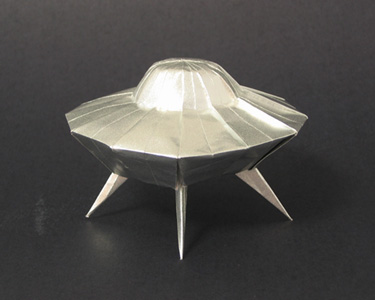It’s that time of year again. Sunday I taught one of origami models at Special Folding Sessions at the American Museum of Natural History. The girls were all excited about it and spent a good part of Saturday making a bunch of origami as a warm up. I was crunched for prep time but was able to fold my chosen model from memory Friday night and print out some CP’s Saturday.
This year we did the whole thing pretty well as far as the timing goes. We were up late the night before grouting or newly tiled bathroom (more on that in another post) so we weren’t in a hurry to get to the Museum early. We did have time to hit some of the highlights, including the awesome dinosaur hall, the elephant hall, the whale room and the space center. The kids really dug it. Lizzy brought her camera and everything. Michelle says she wants to have her birthday there.
It occurred to me that the museum is also a meta-museum of sorts, a museum about the idea of what it is to be a museum. It was very state-of-the art 100 some odd years ago, with it’s halls of skeletons and taxidermy and broad marble staircases, all of an age preceding television and multimedia nature documentaries and elevators and even electricity. And an age of different values, too: it certainly would cause an outrage if someone were to go out and shoot all those animals nowadays. It remains the archetype for every other Science and Natural History museum I’ve ever been to (I still remember vividly my first trip to the Buffalo Museum of Science as a child), and yet the format, rather than being some quaint anachronism, is strangely enduring and compelling. I guess that’s what I means to be an institution.
It also occurs to me that as a home for the origami society is strangely fitting, in that exotic animals, modern and extinct are enduring subjects for origami, and in fact a great exercise would be to spend a day walking around the museum folding pretty much anything you see.
Which brings me to my class. The model I chose to teach was my UFO. This is part of my Origami From Space series, along with my Rocket Ship. The model is based on polar coordinates, and has a few tricks which have not seen anywhere else, including the method for creating the central dome. IMHO it is a very elegant model; the final form is just right to my eyes, and it is efficient in both it’s use of paper and the folding sequence. I consistently get compliments on it. However, it turns out to be very difficult to fold because so much of it is in 3-D and you have to be able to visualize it in 3-D even in the prefolding. This is the second time I’ve taught my UFO, and folders of a certain level seem to get it , and arriving at the finished model seems rewarding. So congratulations for seeing thru to the end, and nice work!
